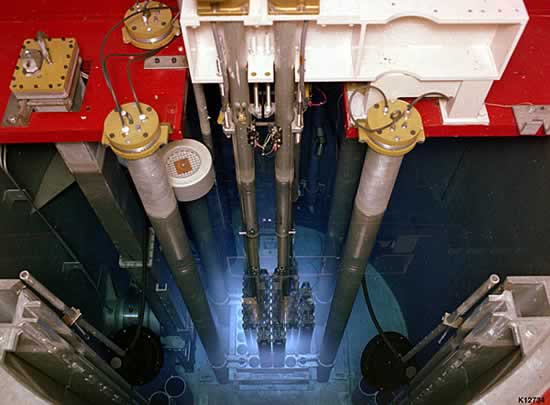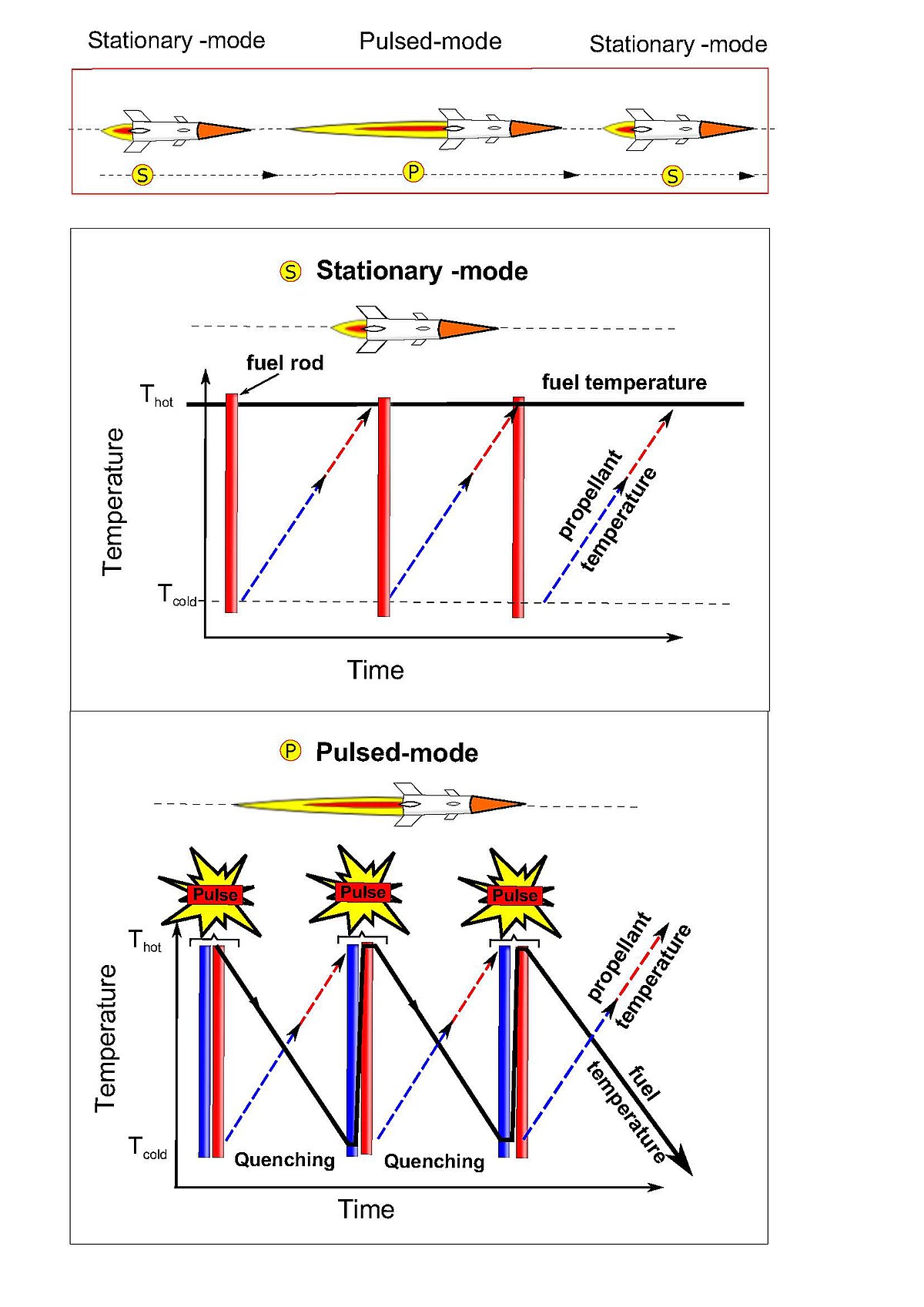Completely unrelated to Orion. The gist of the idea is to improve NERVA applying TRIGA technology to it.

 en.wikipedia.org
en.wikipedia.org
It is kind of fourth way to improve NTR - beyond solid (isp 900 seconds), liquid (= 1200 seconds) and gasesous core (2000+).

 en.wikipedia.org
en.wikipedia.org
 www.projectrho.com
www.projectrho.com
Would that work ? Would it have high thrust and thus could we get a viable NTR SSTO out of this ? I'm thinking of something akin to Gurkolyot > https://www.secretprojects.co.uk/threads/myasishchev-m-19-projects.18507/

TRIGA - Wikipedia
It is kind of fourth way to improve NTR - beyond solid (isp 900 seconds), liquid (= 1200 seconds) and gasesous core (2000+).

Pulsed nuclear thermal rocket - Wikipedia
Engine List 2 - Atomic Rockets
....The pulsed nuclear thermal rocket is a type of solid-core nuclear thermal rocket concept developed at the Polytechnic University of Catalonia, Spain and presented at the 2016 AIAA/SAE/ASEE Propulsion Conference. It isn't a torchship but it is heading in that direction. Thanks to Isaac Kuo for bringing this to my attention.
As previously mentioned, solid core nuclear thermal rockets have to stay under the temperature at which the nuclear reactor core melts. Having your engine go all China Syndrome on you and shooting out what's left of the exhaust nozzle in a deadly radioactive spray of molten reactor core elements is generally considered to be a Bad Thing. But Dr Francisco Arias found a clever way to get around this by pulsing the engine like a TRIGA reactor. The engine can be used bimodally, that is, mode 1 is as a standard solid-core NTR (Dr. Arias calls this "stationary mode"), and mode 2 is pulsed mode.
Pulse mode can be used two ways:
Direct Thrust Amplification: Garden variety solid core NTRs can increase their thrust by shifting gears. You turn up the propellant mass flow. But since the reactor's energy has to be divided up to service more propellant per second, each kilogram of propellant gets less energy, so the exhaust velocity and specific impulse goes down.
But if you shift to pulse mode along with increased propellant mass flow, the reactor's effective energy output increases. So you can arrange matters in such a way that each kilogram of propellant still gets the same share of energy. Bottom line: the thrust increases but the specific impulse is not degraded.
Specific Impulse Amplification: This is really clever. For this trick you keep the propellant mass flow the same as it was.
In a fission nuclear reactor 95% of the reactor energy comes from fission-fragments, and only 5% come from prompt neutrons. In a conventional solid-core NTR the propellant is not exposed to enough neutrons to get any measurable energy from them. All the energy comes from fission fragments.
But in pulse mode, that 5% energy from neutrons could be higher than the 95% fission-fragment energy in stationary mode. The difference is that fission fragment energy heats the reactor and reactor heat gives energy to the propellant. And if the reactor heats too much it melts. But neutron energy does not heat the reactor, it passes through and directly heats the propellant.
The end result is that in pulse mode, you can actually make the propellant hotter than the reactor. Which means a much higher specific impulse than a conventional solid-core NTR which running hot enough to be right on the edge of melting.
Thermodynamics will not allow heat energy to pass from something colder to something hotter, so it cannot make the propellant hotter than the reactor. But in this case we are heating the propellant with neutron kinetic energy, which has zippity-do-dah to do with thermodynamics.
The drawback of course is that the 95% fission-fragment energy is increased as well as the neutron energy. The important point is by using pulsing you can use an auxiliary cooling system to cool the reactor off before the blasted thing melts, unlike a conventional NTR.
Apparently Dr. Arias' paper claims the pulsed NTR can have a higher specific impulse than a fission fragment engine. I am no rocket scientist but I find that difficult to believe. Fission fragment can have a specific impulse on the order of 1,000,000 seconds.
So if N is between 600 and 6,000, the specific impulse will increase by a factor of 5.57 to 17.35. With a basic NERVA having a specific impulse of about 800 seconds, a pulsed version would have instead 4,460 to 13,880 seconds!
Would that work ? Would it have high thrust and thus could we get a viable NTR SSTO out of this ? I'm thinking of something akin to Gurkolyot > https://www.secretprojects.co.uk/threads/myasishchev-m-19-projects.18507/
